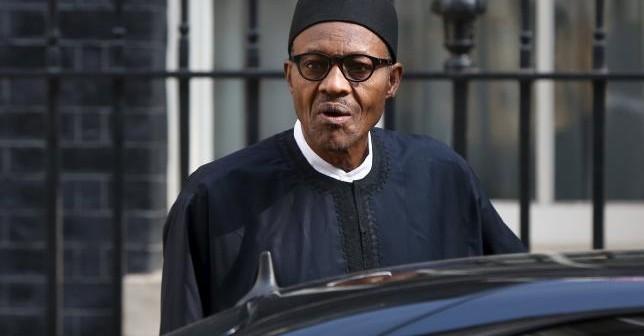


Buhari needs Chief Innovation Adviser
in Politics

A few years ago, a group of African scholars, including myself, with a sprinkle of international, non-African, colleagues, gathered in Accra, Ghana, under the auspices of the then nascent African Centre for Economic Transformation (ACET) to initiate a flagship report of the centre on Africa’s economic transformation. We spent the greater part of the first day debating and, eventually, agreeing on a conceptual definition of economic transformation in order to guide the country case studies. I was leading the Nigerian team.
At that propitious gathering, I canvassed that any definition of transformation must include a clear indication that the country has mastery, a command, if you like, of the production architecture of a few goods and services or a set of goods and services. By this, I explained, that the technology of production of these few goods and services must be under complete control of that country- she can produce it, adapt it, modify it and redirect it to produce profitable goods and services. I was inexplicably defining an Innovation Economy- an economy that creates things. Any other definition of economic transformation would be partial at best. In essence, while I appreciated the necessity of made in Africa, the destination must be made by Africans and a transforming nation should have the benchmarks for moving towards this destination.
My concern is that Nigeria is not establishing these benchmarks and no one is worrying about them. The global innovation index of 2014 ranks Nigeria 110 out of 143 countries. Compare that with the ranking of these selected countries: Rwanda (102), Egypt (99), Uganda (91), Indonesia (87), Kenya (85), India (76), Brazil (61), South Africa (53), Barbados (41), Mauritius (40), Malaysia (33), China (29), South Korea (16), Israel (15), and Finland (4). This index, while not perfect, clearly underscores our innovation gap and points to the sets of issues that the new leadership should address in the drive to transform the economy and provide prosperity for all.
To transform is to turn the corner permanently in your science and technological trajectory, championed by an intelligent government and owned and promoted by a business class, an entrepreneurial and innovative class. Entrepreneurship cannot be discussed or promoted in isolation. It must be promoted concomitantly with innovation. The new growth and prosperity- promoting entrepreneur must be creating and inventing things: a new drug, a new computer panel, a new water purification machine, a longer lasting solar panel, a new way of gathering intelligence, or even a new business model. Otherwise, you may just be trading in goods, deriving temporary cash value from sub-soil assets and claiming to create wealth as financial experts using other people’s knowledge capital with heavy user charges and heavy fees paid as royalties for patents. This is the kind of wealth creation that does not spread long-lasting prosperity for the majority of the citizens; the kind that reflects in growing macro-aggregates, without a strong microeconomic foundation which innovation represents.
To transform is to diversify the economy. But diversification is not a natural phenomenon, as many of our leaders’ pronouncements tend to suggest. It must be caused to happen through organized public actions. Development and inclusive prosperity is, therefore, about diversification and structural change, the creation of new things on a competitive basis from both the traditional and non-traditional sectors. It is technology-led development, which is a leadership endeavour. Leaders and their governments must provide the vision, the strategy and the infrastructure, both human and physical that underpins any industrial or technological advantage. The government must do more to support private initiatives other than providing an enabling environment in the tradition understood by most macroeconomists. By providing the strong pillars of innovation, the assets required for creating and manipulating technical knowledge etc., it can signal where the entrepreneurial class can compete and where the nation’s competitive advantage would lie in the future.
The more underdeveloped a nation is the more the government is expected to do. And let me emphasise that no nation has ever diversified without active government brokerage and intervention, often couched in terms of industrial and technology policy or what may be termed as industrial policy by other means – the sort that industrialized countries engage in. The pillars of government’s intervention include training of critical mass of high quality scientists and engineers, significant and purposeful Research and Development spending, creation of incentives for invention and patenting, nurturing and encouraging venture capitalists that can support a start-up culture and, sometimes, acting as the venture capitalist through an Innovation Fund, creation and support of dynamic business clusters, bolstering firm-level competitive behavior that encourages learning and innovation, investing in specialised infrastructure and institutions, acting as a broker between knowledge generating institutions such as Universities and other research institutions and business and entrepreneurial entities that have the capacity to translate ideas and promising research results into goods and services.
There is more. The leadership must be entrepreneurial and visionary with a strong sense of purpose. It must have the capacity and the moral authority to change the citizens’ and other layers of governments’ “mental model” including self-doubt, reward for production rather than consumption, resolution of coordination failure between the Federal Government and states and local governments and their understanding of their role in innovation and job creation, tap into Diaspora knowledge, access and network, and to address cultural traits that inhibit innovation such as risk-averseness, fear of failure, paternalism and hierarchy, gender inequity, poor attitude and work ethics. The leadership must imbue citizens with the right innovation orientation: to grow their insights, to build interpersonal trust and cooperation, to continually learn in order to improve productivity and competitiveness and incentivise and challenge them to dare.
When President John F. Kennedy on May 25, 1961, stated that America would land a man on the moon, he did not have all the facts. He knew that it was going to be a challenging technological achievement. His goal was to demonstrate technological superiority over the Soviet Union. And leaders set goals. That mission statement from a respected leader galvanised NASA and the American scientific community and mission was accomplished by 1969. Israel has been described as “start-up” centric, with more business start-ups per capita than any other nation, with half of her exports in the high tech sector. They have turned their desert to forest. But the government of Israel including her early leaders such as Ben-Gurion and Shimon Peres worked tirelessly to build the foundation for their technological revolution. Finland, the home of Nokia, was a natural resource based economy, exporting forestry-based products such as paper a few years ago. Thanks to the foresight of her government and leaders in the 1990s, they created institutions and used active technology policies to transform their economy, moving from investment driven to innovation driven economy. Today, Finland is one of the most competitive in the world and her major exports are in high tech. The story of Nokia, a large technology company, a former rain boot manufacturer is a story of effective partnership between an intelligent government and an innovative private sector.
In his 2012 State of the Union Address, President Barack Obama spoke about how to motivate what he called “an economy built to last,” an economy with a strong manufacturing base and an economy that generates quality jobs. But more importantly, Obama outlined strong and intelligent policies that would underpin this economy, and the robust relationship between the government and the private sector that gives birth to this economy. Such government interventions, according to him, include training skilled workers, strengthening education especially in science and engineering and supporting innovation and “using public resources to develop technologies that industries use.” He went further to illustrate this when he said, “it is public research dollars, over the course of 30 years, that helped develop technologies to extract all this natural gas out of Shale rock…government support is critical in helping businesses get new energy ideas off the ground.” It is, therefore, clear that both in developed and developing countries, where structural transformation has taken place or is taking place, it is government’s business to support business innovation and competitive edge. But it must be done in an intelligent and strategic manner. And it requires leadership at the highest level.
So what is Nigeria’s model for an innovation economy? What kinds of assets and benchmarks are we building? And what are the institutions that can be used to create an innovation economy – one that would create wealth and spread prosperity? Nigeria has at least four important Federal Parastatals that can be organised and re-directed to support and accelerate our innovation assets. They are the Raw Material Development and Research Council (RMRDC), National Office for Technology Acquisition and Promotion (NOTAP), Petroleum Technology Development Trust Fund (PTDF), and Tertiary Education Trust Fund (TETFUND). These institutions have quasi-independent sources of revenue and can be galvanised to collaborate and be more strategic. In addition, I would like to suggest that we create an Innovation Fund. The nucleus of such a fund can be all the recovered monies and assets from corrupt acts, including those from corrupt politicians and private sector actors. This would be a classic case of turning evil into good.
In order to provide leadership at the highest level, the President would require a Senior Adviser – a Chief Innovation Adviser (CIA). This cabinet level appointee would be responsible for dealing with the issues raised in this piece. Acting on behalf of the President, he or she would coordinate the relevant MDAs and engineer the States to be centres of innovation for the purpose of creating quality jobs and spreading prosperity, work with the private sector to improve innovation at the firm-level, serving as a bridge between public initiatives and generation and use of knowledge capital in the private sector. Above all, he/she would be the constant reminder to the President that on this matter he must provide strong leadership, as the Innovation Commander-in Chief. And that the buck stops with him.
source: latestnigeriannews.com
Share this post
Naijanetwork Forum Statistics
Threads: 14865,
Posts: 17924,
Members: 6716


